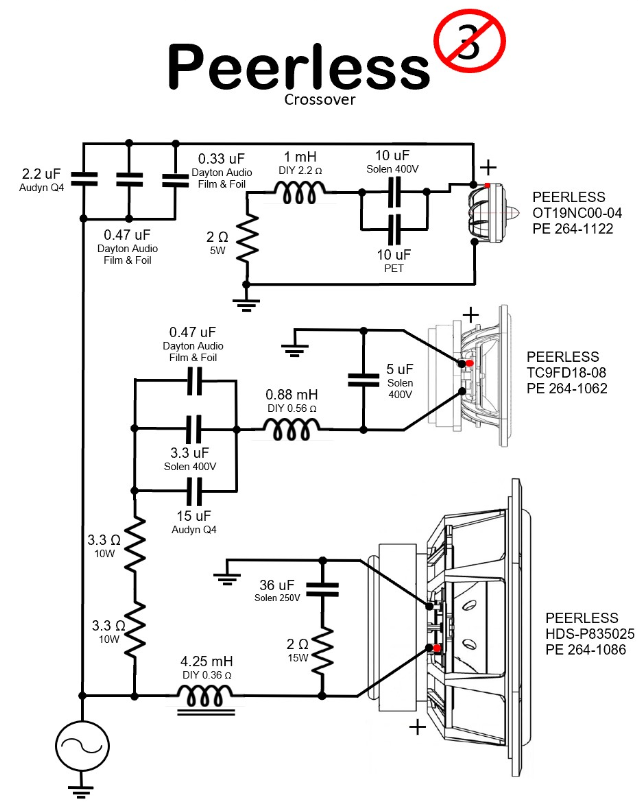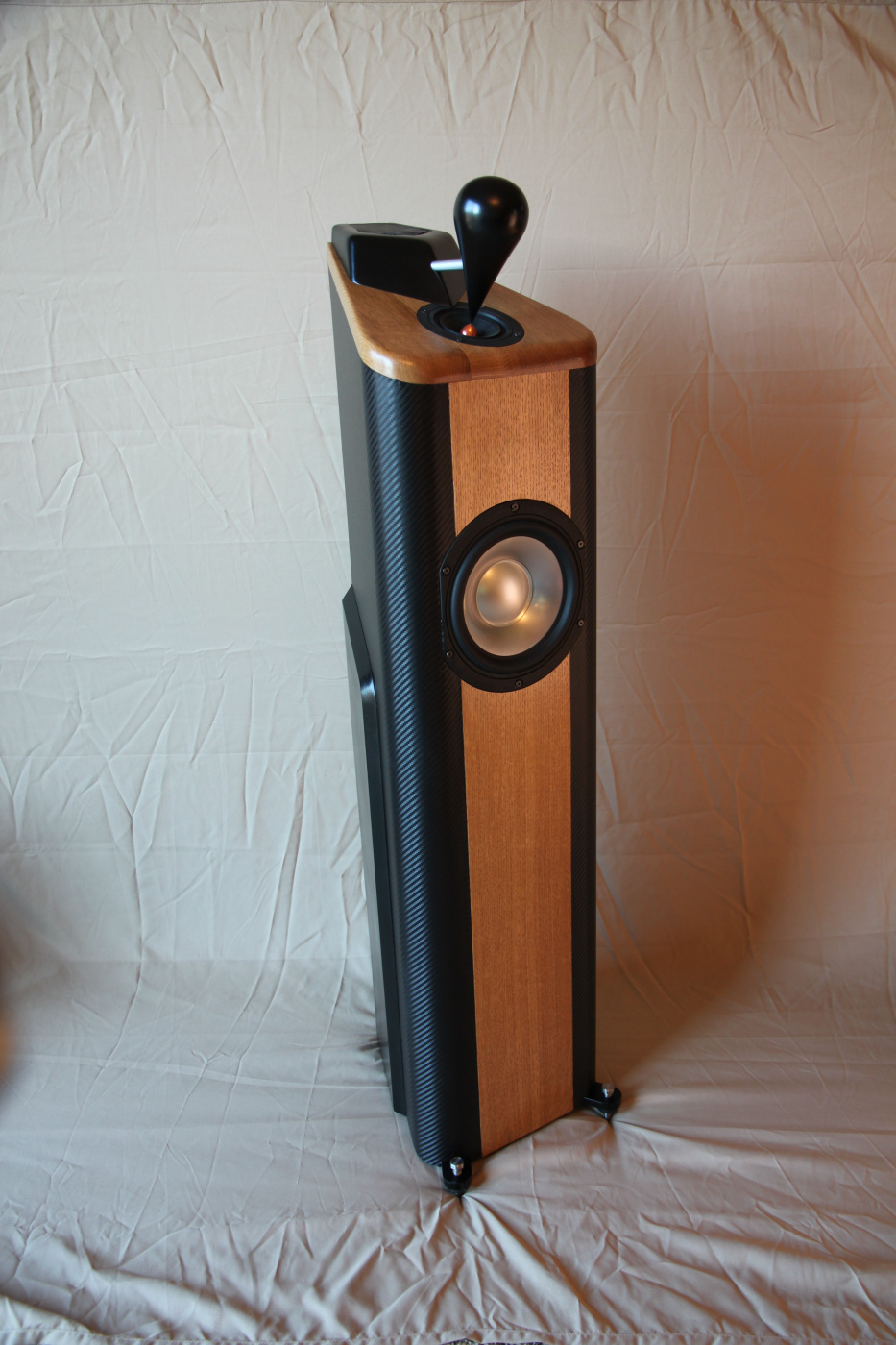@Shawn_K said:
My speaker design competition scoresheets were sent back to PE due to the street address being incorrect. Vivian Jones at PE scanned them and sent them to me today.
My speaker design is called Peerless Uncubed (3-way all peerless drivers in an enclosure with only one 90 deg corner)
My scores are as follows Clarity, Craftsmanship, Dynamic Range, Originality of design, Soundstage/Imaging, Tonal Balance.
Comments,
Judge 1: Track 1: Good female and male voices. Good bass slam.
Track 2: Good clarity in vocals. Weak imaging.
Track 3: Fun sounding on this cut. Good vocals.
Not sure why image was so vague.
Judge 2: Soundstage good. Bass a little lumpy. Transients good. Voices good. Good separation of voices and instruments. Good sound decay.
Judge 3: Track 1 and 2: Good clarity and detail. Nice tonal balance.
Track 3: Vague center image. Good detail and aim, not bright. Nice soundstage.
My takeaway from the comments is my speakers has good voices, tonal balance, detail and soundstage but lacked good imaging. My speakers are an asymmetrical design, and the dispersion is different from the left and right side of the speakers and at the competition setup I positioned them to so that the side wall reflection would be reduced (more dispersion inward). I noticed that Judge 1 (Jerry) was moving his head to the center of the table which signaled to that he was having issues hearing the right-hand speaker. The 3-point score I got for Soundstage/Imaging by judge 1 really pulled my score down. My overall score was almost exactly what I predicted, and I think placed 5th overall (I don't know for sure not all the scores have been shared). My next design will be a high end 3-way MiniDSP/Passive system and I have about $1600 in drivers invested.
The MT section looks a lot like the Hafnium design, even the mounting.
I'm curious what you wound up with for the crossover design.
Keep an open mind, but don't let your brain fall out.
Scott your Hafnium design did inspire some of the elements of my design after I decided to use the Peerless TC9 full range as a mid-range and the OT19 tweeter. Both are very good performing drivers and low cost making them some of the best drivers for the money. I have used the Aluminum cone woofer on another project in the past and really like it and I think part of the reason is I think it sounds more dynamic compared to a similar cost Dayton audio RS180. The only downside of this driver is the response is rough above 1 kHz but used in a 3-way up to 650 Hz it's great. The tweeter mid-range crossover point is about 3.1 kHz. The tweeter waveguide was made with a 7/8 inch round over router bit and then the back side of the baffle is recess so the waveguide depth is about 1/2 inch. The radii on the baffle for the mid-range was made with a 3/8 inch round over router bit and then the back side of the baffle is cutout 1/2 inch deep to fit the square shape of the TC9. I tried many different mid-range edge designs on my measurement test panel; 1/4, 3/8. 1/2 inch round overs and 45 and 30 degree chamfers and found the 3/8 inch round over produced the smoothest on and off axis response. The mid-range is mounted to the back of the baffle with a 3D printed part and behind that is a tapered cardboard tube I made that meets a 3 inch diameter opening on the back of the speaker. I made the mid-range open back with progressively denser stuffing material as the sound wave gets farther from the speaker to help absorb the back wave but with very little output out the back of the speaker. It's my new favorite speaker.
MS Excel - Line elements for the wires and pictures from the drivers, Inductors and resistors. Text box's for the labeling. I do my design in Passive crossover designer.
Not to nit-pick your work, because your schematic is much better than most, but I would change the woofer and mid so that their terminal that is grounded is towards the bottom of the page. It's just cleaner and easier to read when everything that is shunted to ground is hanging below. Hope that makes sense and just a suggestion.
Is that the same woofer you used in the small floorstander with the PS95 a few years ago?
Out of curiosity, I plugged your crossover into my Hafnium sim. I think you may be missing a resistor in the tweeter network unless the OT19 has changed a lot since I used it last. Otherwise the mid-tweeter crossover looks good and about where you said it was. In the Hafnium, I ran the mid between about 300 Hz and 2.5 kHz. I really didn't want to hear the little Tang Band sub any higher in frequency than I had to.
I might have considered upping the frequency of the mid-tweeter crossover like you did if I had it to do over again. I would also consider using the SB Acoustics 5x8 passive radiator to tune the Tang Band sub as I think it would address the port dilemma of trying to get a low enough tuning in that small enclosure. The SB PR actually models very well in the Hafnium application. It would tune a little higher (upper 30's), but roll off steeper and better protect the woofer at higher SPL's.
I think one place where 3D printing has real value in DIY is for midrange enclosures. Mine was just standard plumbing parts and enough stuffing/damping so I couldn't tell that's what I was using...
It looks like a solid design and I bet it sounds great. As you said, the TC9-OT19 combo is crazy good for the money.
Keep an open mind, but don't let your brain fall out.
Comments
Class of entry? Under $300?
Oh- and you are classified as 'banned' on your avatar over at PETT now, which is not really what you asked for.
InDIYana Event Website
Not an issue Shawn, no harm done.
Under $300,
I may need to ask PE if they will reinstate my status at PETT.
The MT section looks a lot like the Hafnium design, even the mounting.
I'm curious what you wound up with for the crossover design.
Sehlin Sound Solutions
Scott your Hafnium design did inspire some of the elements of my design after I decided to use the Peerless TC9 full range as a mid-range and the OT19 tweeter. Both are very good performing drivers and low cost making them some of the best drivers for the money. I have used the Aluminum cone woofer on another project in the past and really like it and I think part of the reason is I think it sounds more dynamic compared to a similar cost Dayton audio RS180. The only downside of this driver is the response is rough above 1 kHz but used in a 3-way up to 650 Hz it's great. The tweeter mid-range crossover point is about 3.1 kHz. The tweeter waveguide was made with a 7/8 inch round over router bit and then the back side of the baffle is recess so the waveguide depth is about 1/2 inch. The radii on the baffle for the mid-range was made with a 3/8 inch round over router bit and then the back side of the baffle is cutout 1/2 inch deep to fit the square shape of the TC9. I tried many different mid-range edge designs on my measurement test panel; 1/4, 3/8. 1/2 inch round overs and 45 and 30 degree chamfers and found the 3/8 inch round over produced the smoothest on and off axis response. The mid-range is mounted to the back of the baffle with a 3D printed part and behind that is a tapered cardboard tube I made that meets a 3 inch diameter opening on the back of the speaker. I made the mid-range open back with progressively denser stuffing material as the sound wave gets farther from the speaker to help absorb the back wave but with very little output out the back of the speaker. It's my new favorite speaker.

Shawn - a little off-topic but what program did you use for that schematic, it's really clean and clear?
MS Excel - Line elements for the wires and pictures from the drivers, Inductors and resistors. Text box's for the labeling. I do my design in Passive crossover designer.
Not to nit-pick your work, because your schematic is much better than most, but I would change the woofer and mid so that their terminal that is grounded is towards the bottom of the page. It's just cleaner and easier to read when everything that is shunted to ground is hanging below. Hope that makes sense and just a suggestion.
Is that the same woofer you used in the small floorstander with the PS95 a few years ago?
Out of curiosity, I plugged your crossover into my Hafnium sim. I think you may be missing a resistor in the tweeter network unless the OT19 has changed a lot since I used it last. Otherwise the mid-tweeter crossover looks good and about where you said it was. In the Hafnium, I ran the mid between about 300 Hz and 2.5 kHz. I really didn't want to hear the little Tang Band sub any higher in frequency than I had to.
I might have considered upping the frequency of the mid-tweeter crossover like you did if I had it to do over again. I would also consider using the SB Acoustics 5x8 passive radiator to tune the Tang Band sub as I think it would address the port dilemma of trying to get a low enough tuning in that small enclosure. The SB PR actually models very well in the Hafnium application. It would tune a little higher (upper 30's), but roll off steeper and better protect the woofer at higher SPL's.
I think one place where 3D printing has real value in DIY is for midrange enclosures. Mine was just standard plumbing parts and enough stuffing/damping so I couldn't tell that's what I was using...
It looks like a solid design and I bet it sounds great. As you said, the TC9-OT19 combo is crazy good for the money.
Sehlin Sound Solutions
I know it's weird but there is no resistor in series with the tweeter.
It is the same woofer I used in the Omni direction speaker with the PS95. I brought that speaker to MWAF in 2016 and won in the under $200 category.

That ^ is gorgeous!